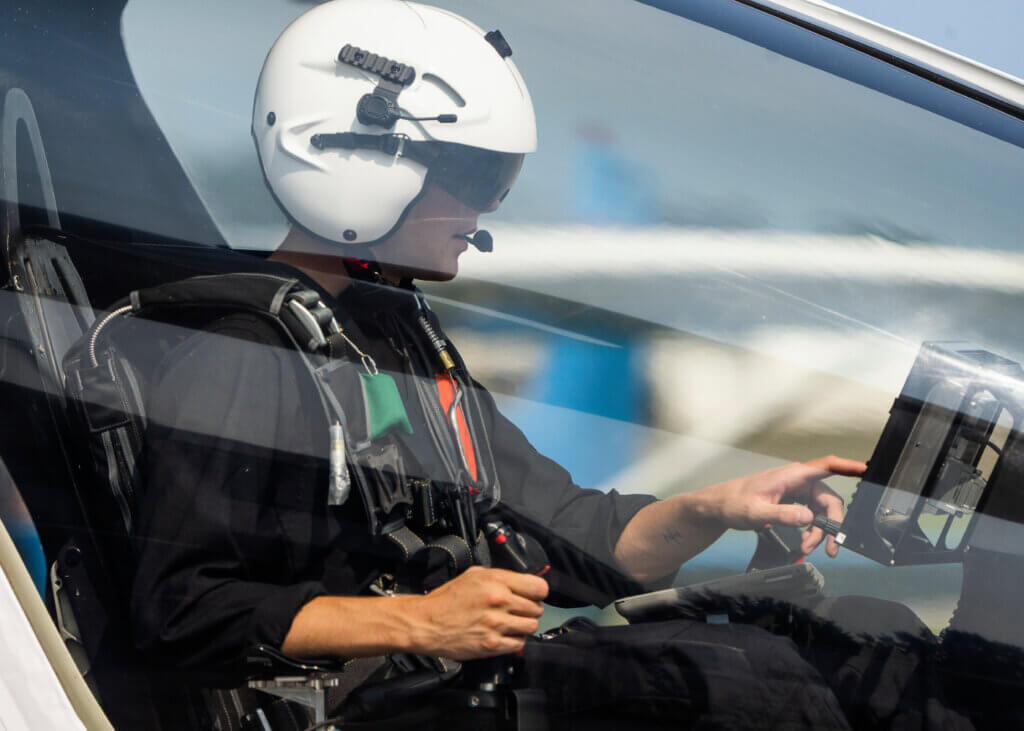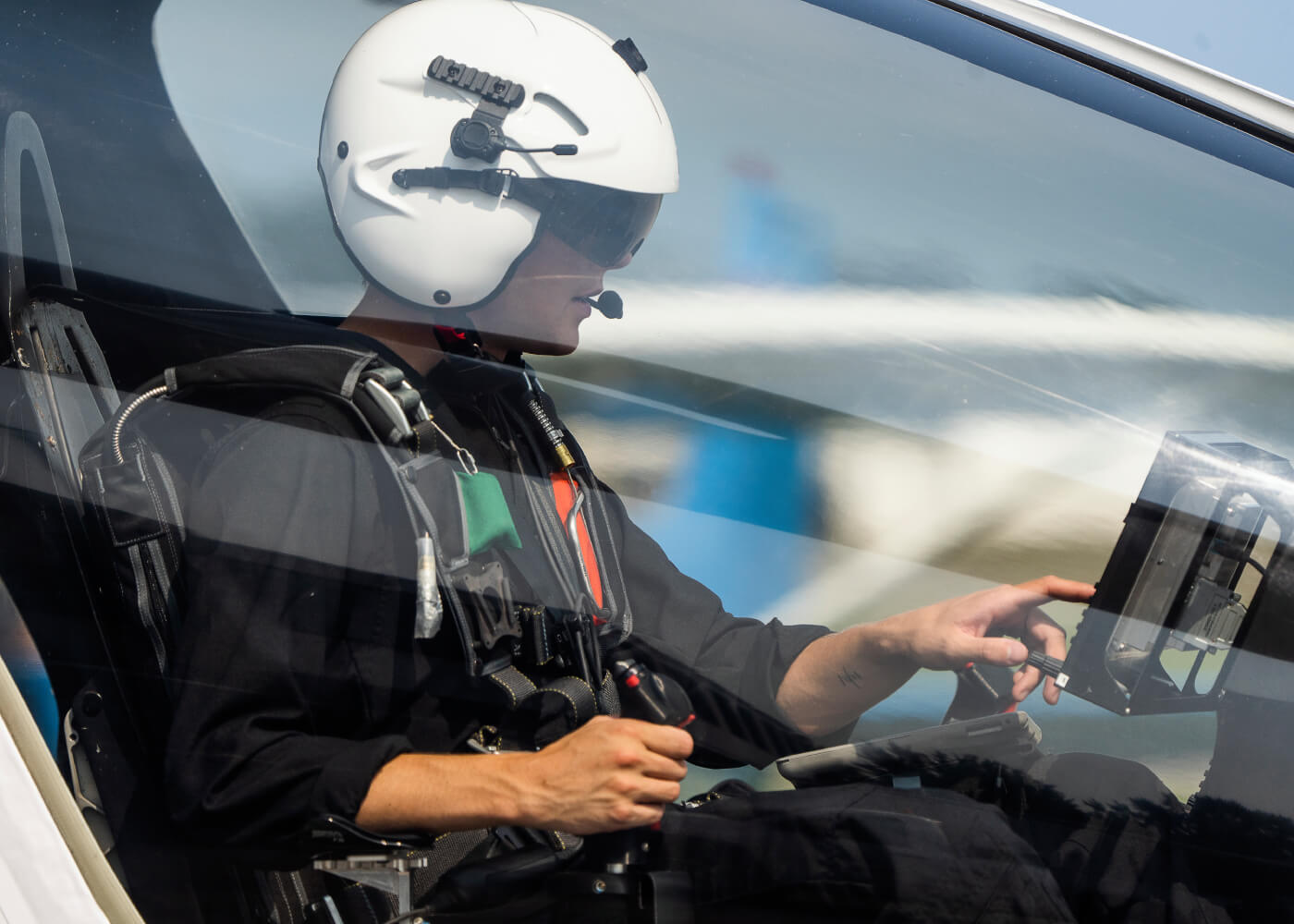Complete removal of humans from air traffic and control of individual aircraft is inevitable but may be decades away. That is the conclusion of Aharon David, an aerospace engineer based in Israel who provides cybersecurity, safety and certification instruction and other services through AFuzion Inc.

“NASA created an AI [artificial intelligence] certification roadmap in 2015, and in that document, it specifies that an AI may be eventually required to get a pilot’s license,” David said. “That day is coming. Nothing is going to stop full automation but how long it will take and how we will get there is not yet known.”
Among his many ongoing engagements, David recently presented on this topic at SAE’s Next-Gen UAM and Unmanned Aircraft Summit in late September and is completing a three-part report for SAE on the same topic called Controlling Aircraft – From Humans to Autonomous Systems: The Fading Humans. Part 1 of the report is already available by SAE, and Parts 2 and 3 will be finished next year.
During the summit session, David presented many serious points to ponder about aircraft operation without human involvement, including the growing automation of flight instruments, AI, and the safety aspects of the “fading” process. While no one can know for sure what aviation will look like with humans completely removed from the equation, David has much insight to share.
Here is a summary of a wide-ranging conversation about the “fading humans,” both fascinating and perhaps a little frightening as well.
History of automation
David said the SAE session and reports came about when he was discussing automation with SAE staff.
“They asked me if UAVs [unmanned aerial vehicles] are going to ferry humans in the air and I said that is already happening,” he explained. “The automatic system in commercial airliners does almost everything. You only physically need a pilot to initiate takeoff and landing, and so in reality, humans are a redundancy over the machine. There are several layers of redundancy and we could have more instead of having humans present in the cockpit, but we still choose to have human pilots involved. So, we are already there.”
But let’s go back to the beginning for a moment. An important and generally unknown fact about autonomous operation of aircraft is its progression began almost immediately after the very first flight in history in 1903.
“The first flight of the Wright Brothers was actually the first and last time humans directly controlled everything to do with flight,” David explained. “Humans doing the research, to building the aircraft, to directly controlling the aerodynamics and the engine, that existed only basically during the first flight.”
Right away, there were changes that distanced the human from flight control, he said. This included design changes with greater aircraft size, speed and sophistication. Sticks and pedals were also added, and so on.
“Within a little more than a decade, in 1914, Lawrence Sperry flew using his newly invented gyroscopic stabilizer. He raised his hands in the cockpit while his assistant stood on the wing in a famous picture to demonstrate this,” David said. “The aircraft flew itself according to the stabilizer, not direct human control. As the years went by, we had hydraulics, fly-by-wire, fly-by-light, and now, even power-by-wire. Everything is electrical with actuators, not hydraulics, with fly-by-wireless emerging. This is dangerous and not yet mature. We must remember that aircraft do not fly in a clean electromagnetic environment.”
But let’s return for a moment to Sperry’s stabilizer and other changes to pilot-aircraft interaction. At the same time that all these aircraft design developments were occurring, the pilot experience was also changing.
As David explained, it became difficult for pilots over time to see outside the aircraft and control the wings by sight.
“So, we went to switches and dials, then buttons, then primary flight display [PFD] instruments, then head-up display with no need to look down into the cockpit at all, and now we are into screen touch PFD and helmet-mounted displays,” he said. “We are at the stage of augmented reality, but we are getting closer to virtual reality. Once we get all the way to virtual reality, we don’t need to be in the aircraft. We can be on the ground. But as I’ve said, we already have automated commercial airplane flight with no need for pilots in those aircraft except to physically initiate two processes.”
Takeoff and landing initiation could be done by anyone on the flight crew, by remote control or by the automated system itself once given the green light, as pilots are given now by air traffic control.

Risk from pilot involvement
David said the industry must also consider that having pilots in an environment of extensive automation can be dangerous.
“Reliability must be very, very high in aircraft operation,” David said. “The goal is so that the risk of an accident is one in a billion [hours] — that no accidents happen during all the lifetimes of all the aircraft of a given model. The Boeing 777 is an extremely safe model. In 2013, there was an accident [killing two people] with a 777 in San Fransisco, but this was due to pilot error. The pilot in training was not accepting the machine’s guidance, was not accepting the machine’s version of reality. Autopilot was off and there was not enough speed on landing approach.”
Indeed, early results of a research project headed by Aptima through the U.S. Air Force that examined eVTOL pilot training found that experienced pilots may have skills that may not be useful or even desired in platforms with more automation and augmentation.
For them, eVTOL piloting may require an “unlearning” and retraining of behaviors to prevent interference or conflict with automated operations.
Project manager Dr. Samantha Emerson noted that experienced pilots will require a mindset shift to pilot the highly-automated eVTOLs to come. Some may be hampered by the instinct to “overcontrol” and will need to learn to trust the automation found in eVTOLs.
“You don’t want there to be conflict between a pilot with an automated process that’s been proven to be successful,” she said. “We want to ensure that the human and machine are working as an integrated team.”
On that note, David explained that the industry is hovering in the first and second levels of the three progressive levels of automation of flight (or any other process), as envisioned by the European Union Aviation Safety Agency.
In level one, automation provides assistance to humans. Level two is collaboration (which is the operation of most eVTOLs once they hit the market) through to automation with human oversight (commercial airliners), and level three is complete autonomy.
At that level, humans are not able to intervene in the control of the AI over a process, only to disengage it.
David noted that urban air mobility can only be achieved safely at scale with at least level two if not level three automation — a large degree of automated flight.

Looking forward
While it’s difficult to determine just how we will get to fully automated flight, David suggests a few points to ponder about the journey ahead.
“We can only create software we can understand,” he said.
The human ability to create software is limited by the capabilities and limitations of human cognition. Software developments and breakthroughs also take time and build on each other. However, the ability for AI to write software is so far mainly unexplored and may play an important role in automation of flight and other processes.
“The very narrow capability of AI that’s used to fly an aircraft, called machine learning, surpassed human level flying ability a long time ago.”
However, David noted that we can’t yet prove that capability is safe.
“At its core, safe operation of any vehicle involves mitigating the risks of complex functions with ‘real-time assurance,’ as described in the ASTM F3269 document. You have a complex function such as aircraft takeoff, a controller for the function, real-time monitoring of the output of the controller, and then recovery if the function is not delivered or if the vehicle is being operated in such a way that it exits margins of safety for altitude, speed, proximity to other aircraft and so on. This already exists for human pilots in fighter jets where there may be loss of consciousness. So, we are using this framework already against humans to keep operations safe, but we are going to need to apply it against AI.”
Does this mean we will need two AI entities — one to operate the aircraft and one to oversee it? One to do air traffic control and another to oversee that?
“We have to come up with a new paradigm.”
David explained that by next year, SAE is expected to present a guidance document, ARP6983, that will include a new paradigm for how automated flight may be achieved. He is unsure what this paradigm will entail, and said there are a lot of AI tools out there, but no one is convinced that any set of them will provide the safety level required. A few directions are being explored, and it’s likely the industry will see a collection of tools that will be involved.
David encourages everyone in the industry to register for the session on AI at the SAE AeroTech conference in March 2024 that will feature a panel of women conducting research in this area.





